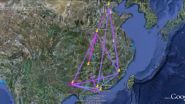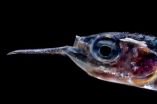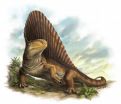(Press-News.org) Since its first identification in Asia, highly pathogenic avian influenza—H5N1—has caused significant alarm in the scientific community. While the virus' primary target is birds—tens of millions have already died from it—it is capable of infecting mammals, including humans, causing serious illness and a frightening rate of mortality.
In a new study, Matthew Scotch, a researcher at Arizona State University's Biodesign Institute, tracks the spread of an H5N1 variant in Egypt—a country recently identified as a major epicenter for the virus. In results recently appearing in the journal BMC Genomics, Scotch tracks the spread of H5N1 cases using a technique known as phylogeography.
The authors hope that studies of this kind will significantly enhance efforts by public health officials to identify viral outbreaks, limit their spread, coordinate vaccination efforts, reduce mortality and better inform the public of risks.
"Egypt represents an epicenter for H5N1 and there are new variants that have emerged since it was first discovered there in 2006, "Scotch says. "We used phylogeography and influenza genome sequences to model diffusion and evolution of the virus."
Phylogeography was born out of the fields of biogeography and phylogenetics or molecular evolution. By combining viral sequence data and geographical information over time, as well as evaluating features associated with viral carriers, researchers can better understand how viruses spread across a landscape through animal and human populations.
Phylogeography has already been established as a powerful technique for investigating viral dispersal for human diseases, including dengue fever, rabies, influenza and HIV. Recent application of phylogeographic methods to the study of avian influenza promises to significantly improve fine-grained mapping of viral origin and spread.
Avian flu H5N1 is a form of influenza A—an RNA virus— first identified in Hong Kong in 1997. The initial cases of H5N1 were apparently not transmitted efficiently among birds. In 2002 however, new isolates of H5N1 appeared, causing acute disease in ducks, resulting in neurological dysfunction and death.
Infected birds transmit H5N1 to one another through nasal secretions, saliva, feces and blood. Other animals, including humans, may become infected with the virus through direct contact with avian bodily fluids or through contaminated surfaces.
VIDEO:
Biodesign Institute Researcher Matthew Scotch discusses the spread of avian flu and the ZooPhy graphical system used to track it.
Click here for more information.
Human cases of H5N1 often result from contact with infected poultry, particularly in live bird markets and farms, which are believed to be major reservoirs for the virus. Avian H5N1 however, is also carried by migratory species of birds, which further spread H5N1 to other parts of the world.
In 2004, researchers discovered that H5N1 is a more potent pathogen than originally assumed, attacking waterfowl, chickens, crows, pigeons and ducks, as well as mammals, yielding a high mortality rate. Avian flu is now considered a significant global health threat, with the very real prospect of an international pandemic, causing widespread fatality.
Indeed, the mortality rate in humans contracting H5N1 has been estimated to be around 60 percent, making it more lethal for infected individuals than Spanish influenza—a genetically similar strain that killed 50-100 million people worldwide during the pandemic of 1918.
Currently, H5N1 is not highly transmissible to humans from birds and has a very low rate of human-to-human transmission, (though around a half dozen cases have been reported). Should a small number of mutations render H5N1 more easily transmissible among humans, the conditions for a deadly pandemic will have been met.
In addition to mutations, mixed forms of influenza virus—known as reassortant strains—can occur when a single individual is infected with two versions of a given virus and they exchange genes. An H5N1 reassortant could render avian influenza readily transmissible between human hosts.
In the new study, a particular variant of H5N1, labeled 2.2.1.1, was observed in Egypt. There, avian flu has already killed thousands of birds and caused 173 human cases, of which 63 have been fatal as of December 10th, 2013, according to the World Health Organization. These are the highest case numbers for H5N1 outside of Asia. As in the case of Asian H5N1, experts associate most human infections in Egypt with exposure to diseased poultry, particularly at live bird markets.
In their attempts to identify the origin and spread of the virus in Egypt, researchers made use of a new software platform created by Professor Scotch. Known as ZooPhy, the program enables the phylogeographic analysis of H5N1 spread. (Maps of viral spread made with ZooPhy may be seen in the accompanying video below.)
The avian influenza virus H5N1 takes its name from two kinds of spikes adorning the viral surface, hemagglutinin (HA) and neuraminidase (NA). Influenza viruses of Type A or Type B use hemagglutinin to attach to cell surface receptors, allowing viral infection of the cell. Neuraminidase later acts to remove these receptors from infected cells, allowing newly synthesized viruses particles to escape and infect other cells.
(There are 17 different types of hemagglutinin, from H1 to H17 and nine different types of neuraminidase, from N1 to N9 among influenza A viruses. Each virus has one type of H (such as H5) and one type of N (such as N1).)
Through the analysis of 226 HA and 92 NA sequences, Scotch and his colleagues used a phylogeographic approach to trace the preponderance and transmission routes of H5N1 in Egypt. Phylogeography is a particularly fruitful approach for animal-to-human (or zoonotic) RNA viruses, due to short genomic sequences and rapid rates of evolution.
The group's findings revealed a geographic spread of the 2.2.1.1 viral form of H5N1 across Egypt's four primary areas: Cairo, Nile Delta, Canal and Upper Egypt. Statistical analysis suggests the northern governorate of Ash Sharqiyah as the point of origin for the spread of H5N1, however, the mathematical association is too weak to claim certainty. Analysis also implied that the strongest transmission routes for H5N1 were from Ash Sharqiyah to Al Gharbiyah and Al Fayyum to Al Qalyubiyah.
Most of the identified routes of transmission appeared in the densely populated Delta region of Egypt. The Al Qalybiyah governate in particular appears to be a popular area for viral transition, though dispersion to and from this region remains uncertain, requiring further research. The study also noted considerable viral diversity over a limited time frame—perhaps an evasive response to a country-wide poultry vaccination program.
"This has significant public health implications for the rest of the world," Scotch says. "It is important to focus on variant clades in order to better understand how this virus has evolved and which governorates are propograting its spread."
The authors are further developing the ZooPhy software's graphical interface. The tool requires no specialized knowledge of phylogeography or bioinformatics, making it convenient for field use by public health officials. By zeroing in on trade routes, migration patterns and highways of viral transmission, health authorities can conserve limited resources, applying them where they can be most effective.
INFORMATION:
Written by: Richard Harth
Science Writer: The Biodesign Institute
richard.harth@asu.edu
Avian flu variant stalks Egypt
2014-02-07
ELSE PRESS RELEASES FROM THIS DATE:
Substance in photosynthesis was at work in ancient, methane-producing microbes
2014-02-07
An international team of researchers led by scientists at Virginia Tech and the University of California, Berkeley has discovered that a process that turns on photosynthesis in plants likely developed on Earth in ancient microbes 2.5 billion years ago, long before oxygen became available.
The research offers new perspective on evolutionary biology, microbiology, and the production of natural gas, and may shed light on climate change, agriculture, and human health.
"By looking at this one mechanism that was not previously studied, we will be able to develop new basic ...
Finding could explain age-related decline in motor function
2014-02-07
SAN ANTONIO (Feb. 6, 2014) — Scientists from the School of Medicine at The University of Texas Health Science Center at San Antonio have found a clue as to why muscles weaken with age. In a study published Feb. 5 in The Journal of Neuroscience, they report the first evidence that "set points" in the nervous system are not inalterably determined during development but instead can be reset with age. They observed a change in set point that resulted in significantly diminished motor function in aging fruit flies.
"The body has a set point for temperature (98.6 degrees), ...
Gender influences symptoms of genetic disorder
2014-02-07
A genetic disorder that affects about 1 in every 2,500 births can cause a bewildering array of clinical problems, including brain tumors, impaired vision, learning disabilities, behavioral problems, heart defects and bone deformities. The symptoms and their severity vary among patients affected by this condition, known as neurofibromatosis type 1 (NF1).
Now, researchers at Washington University School of Medicine in St. Louis have identified a patient's gender as a clear and simple guidepost to help health-care providers anticipate some of the effects of NF1. The scientists ...
The fatality rate among hard drug users is 14 times higher than for the general population
2014-02-07
A new study analyses the risk factors and excess mortality among heroin and cocaine consumers admitted to treatment in Spain. The results reveal that the fatality rate among consumers of both drugs is 14.3 times higher than for the general population, while among those only using cocaine, it is 5.1 times higher.
In Spain the majority of deaths related to cocaine are not correctly certified and therefore up until now very few studies have been carried out that analyse the consequences of consuming these drugs in terms of mortality.
"Death certificates rarely include ...
Smithsonian reports GMO soybean pollen threatens Mexican honey sales
2014-02-07
Mexico is the fourth largest honey producer and fifth largest honey exporter in the world. A Smithsonian researcher and colleagues helped rural farmers in Mexico to quantify the genetically modified organism (GMO) soybean pollen in honey samples rejected for sale in Germany. Their results will appear Feb. 7 in the online journal, Scientific Reports.
David Roubik, senior staff scientist at the Smithsonian Tropical Research Institute, and colleagues developed the ability to identify pollen grains in honey in Panama and in Mexico during the 1980s and 1990s when they studied ...
Fish biomass in the ocean is 10 times higher than estimated
2014-02-07
With a stock estimated at 1,000 million tons so far, mesopelagic fish dominate the total biomass of fish in the ocean. However, a team of researchers with the participation of the Spanish National Research Council (CSIC) has found that their abundance could be at least 10 times higher. The results, published in Nature Communications journal, are based on the acoustic observations conducted during the circumnavigation of the Malaspina Expedition.
Mesopelagic fishes, such as lantern fishes (Myctophidae) and cyclothonids (Gonostomatidae), live in the twilight zone of the ...
'Steak-knife' teeth reveal ecology of oldest land predators
2014-02-07
The first top predators to walk on land were not afraid to bite off more than they could chew, a University of Toronto Mississauga study has found.
Graduate student and lead author Kirstin Brink along with Professor Robert Reisz from U of T Mississauga's Department of Biology suggest that Dimetrodon, a carnivore that walked on land between 298 million and 272 million years ago, was the first terrestrial vertebrate to develop serrated ziphodont teeth.
According to the study published in Nature Communications, ziphodont teeth, with their serrated edges, produced a more-efficient ...
Study reveals record rise in insulin use
2014-02-07
"Understanding the pattern of insulin use is limited by a lack of data characterising the prevalence of insulin use in the UK," according to Craig Currie, Professor of Applied Pharmacoepidemiology at Cardiff University's School of Medicine, who led the study alongside colleagues from the University of Bristol.
"Given the limitations, our study sought to calculate – for the first time – the best possible estimate of the rates of insulin for type 1 and type 2 diabetes."
In this retrospective study the team examined the number of patients receiving prescriptions for ...
Rett syndrome genetic variants now available for advance testing, diagnosis & research
2014-02-07
Philadelphia, PA, February 7, 2014 – Despite the identification of gene mutations in methyl CpG binding protein 2 (MECP2) being linked to Rett syndrome (RS), research has been hindered by the lack of commercially available reference materials. Through collaboration between the Centers for Disease Control and Prevention (CDC) and members of the clinical-laboratory and non-profit–research communities, 35 DNA samples containing many common RS genetic variants have now been characterized and made publicly available, eliminating a major stumbling-block for investigators and ...
New guidelines for reducing stroke risks unique to women
2014-02-06
For the first time, guidelines have been developed for preventing stroke in women.
"If you are a woman, you share many of the same risk factors for stroke with men, but your risk is also influenced by hormones, reproductive health, pregnancy, childbirth and other sex-related factors," said Cheryl Bushnell, M.D., M.H.S., author of the new scientific statement published in the American Heart Association journal Stroke.
The guidelines outline stroke risks unique to women and provide scientifically-based recommendations on how best to treat them, including:
Women with a ...





